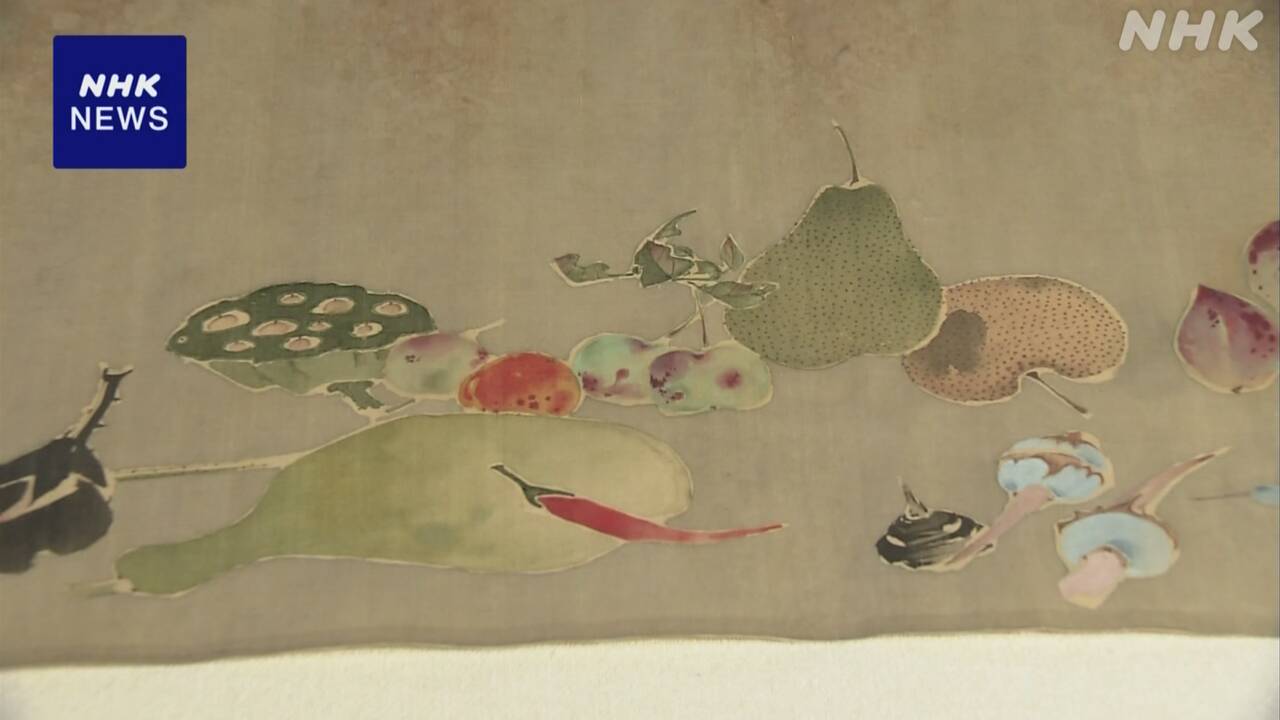A new, colorful scroll-like masterpiece by Ito Jakuchu, a painter who was active in Kyoto during the Edo period, has been discovered.
Experts say, ``This is an important work that provides clues to Jakuchu's state of mind in his later years.''
The newly discovered work is a scroll-shaped work by Ito Jakuchu, a painter who was active in Kyoto during the mid-Edo period, and is a large work measuring over 3 meters and 30 centimeters in length.
In the vivid colors typical of Jakuchu's style, about 40 types of fruits, such as grapes and apples, and vegetables, such as pumpkins and chili peppers, are meticulously depicted, and the signature indicates that Jakuchu was 76 years old. It seems to be a work of time.
Last year, the Fukuda Art Museum in Ukyo Ward, Kyoto City, confirmed the existence of the previously unknown work based on information that it was in Western Europe, determined it was Jakuchu's work, and purchased it. So we named it ``Kasozukan''.
Among Jakuchu's works, the scroll-shaped and painted ones were previously owned by an art museum in Tochigi Prefecture and were designated as national important cultural properties.
Hideyuki Okada, head of curatorial affairs at the Fukuda Art Museum, said, ``There was a work overseas that even researchers had never seen before, and I was surprised at how well it was preserved.It's hard to believe that it was painted 200 years ago, and it has a freshness to it.'' I'm talking.
Tsuji Norio, professor emeritus at the University of Tokyo, who has studied Jakuchu for many years, said, ``I think it's an attractive work, because you can feel Jakuchu's love for plants, and you also get the impression that he painted freely and freely. "This is an important work that gives us clues about his state of mind, such as whether he was facing the work at the time."
This work will be exhibited to the public at the Fukuda Art Museum in October this year.

